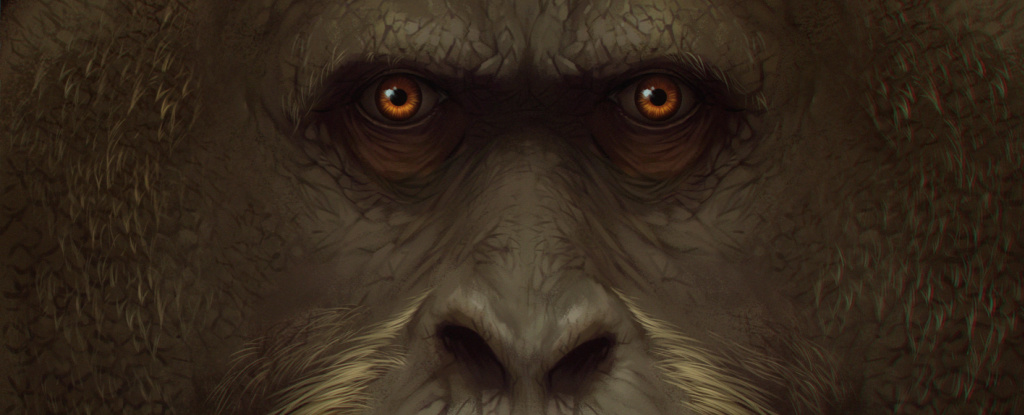
New findings propose that Earth’s largest ape succumbed to the challenges of evolution as its smaller counterparts adeptly adjusted to environmental shifts. Explore the details of this intriguing research on the demise of the colossal ape.
Reaching a towering height of about three meters, the primate known as Gigantopithecus blacki could have tipped the scales at a staggering 300 kilograms (660 pounds). However, much like its megafauna counterparts of that era, the colossal size of G. blacki left it ill-equipped to navigate the increasingly unpredictable conditions that more nimble apes, such as orangutans, successfully adapted to, as revealed by researchers. Delve into the details of this discovery here.
Identified through four jawbones and several thousand teeth, the precise timing and cause behind the ultimate extinction of G. blacki had remained a mystery for paleontologists over the span of decades.
The story of G. blacki is an enigma in paleontology – how could such a mighty creature go extinct at a time when other primates were adapting and surviving?
explains paleontologist Yingqi Zhang from the Chinese Academy of Sciences, who co-led the study.
Illustrating the narrative of the extinction, Zhang and team meticulously reconstructed the surroundings that G. blacki inhabited around 2 million years ago, marking its initial appearance in the fossil record, and contrasted it with the late middle Pleistocene environment during its eventual extinction.
Examining fossils and sediment samples extracted from 22 caves in southern China, half of which housed the remains of G. blacki, they compiled the most extensive collection of evidence for the primate, encompassing its entire geographic range.
Although fossil records may not conclusively unveil the reasons behind a species’ extinction, determining the precise timing of a species’ disappearance aids researchers in honing in on eras marked by environmental and behavioral shifts coinciding with its extinction.
Without robust dating, you are simply looking for clues in the wrong places,
says Macquarie University geochronologist Kira Westaway, who co-led the study with Zhang.
By employing six distinct dating techniques, Zhang, Westaway, and their team approximated that the extinction of G. blacki occurred within the time frame of 295,000 to 215,000 years ago, as derived from 157 radiometric dates they meticulously generated.
Through pollen analyses, it was uncovered that in the period just preceding and during G. blacki’s extinction, the landscapes of southern China underwent a transformation. The once favorable conditions for G. blacki, characterized by dense forests with a thick canopy, abundant water, and plentiful fruit, shifted to drier terrains featuring more open forests, grasslands prone to fires, and heightened seasonality.
This fluctuating climate proved to be the downfall of G. blacki. Dental analyses revealed that, unlike its extinct counterpart, the Chinese orangutan (Pongo weidenreichi), G. blacki struggled to adapt effectively to the evolving environmental conditions.
As G. blacki approached extinction, its teeth exhibited indications of prolonged stress, mirroring the species’ struggle. The diminishing diversity in its diet aligned with the changing landscape as forests opened up and dried out. With dwindling population numbers and a shrinking geographic range, the challenges intensified for G. blacki.
This is the first insight into the behavior of G. blacki as a species on the brink of extinction, which is in stark contrast to P. weidenreichi that shows much less stress at this time,
the researchers write in their paper.
The researchers emphasize that G. blacki didn’t become more vulnerable or endangered in open forests. Instead, the ape relied on nutrient-rich fruits, and its challenges arose as these fruits became scarce due to the transforming forests.
G. blacki was the ultimate specialist compared to the more agile adapters like orangutans, and this ultimately led to its demise,
Zhang says.
While the environmental shift proved fateful for G. blacki, researchers believe there is much to glean from its story regarding primate adaptability to evolving climates, both in the past and potentially in the future.
With the threat of a sixth mass extinction event looming over us, there is an urgent need to understand why species go extinct,
Westaway says.
The findings from the research have been documented in Nature.





